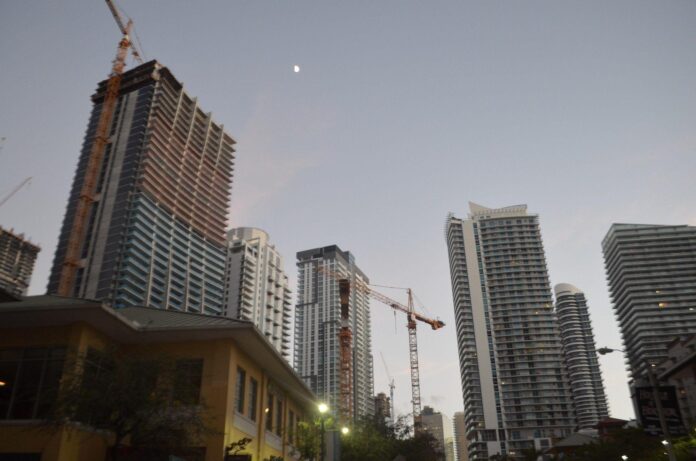Miami officials voted this week to allow work to continue on new luxury high rise buildings being developed by one of the city’s billionaire art collectors even after ancient Indigenous artefacts dating back thousands of years were discovered during construction.
After beginning construction on three Baccarat-branded luxury high-rise towers in Miami’s upscale Bricknell neighbourhood, artefacts were discovered that archaeologists believe are linked to the Tequesta people, one of the earliest Native American groups that occupied the area. Archeologists found pieces of pottery and artefacts made of bone at the site, along with fragments of human remains.
On 4 April, the City of Miami’s Historic and Environmental Preservation Board met to determine a course of action in response to outcry from local residents, including Native American activists and archaeologists. The board voted to allow two of three planned towers to go up. The board voted to withdraw a proposal that would designate one lot that has already been dug up as historic if developers prepare a plan of action for the site. In another vote, board members approved taking steps toward designating a third lot, which has not been excavated, as a landmark.
“This site is significant because it represents … the birthplace of Miami. This is a place, just like this is prime real estate today, this was prime real estate 2,000 years ago,” William Pestle, an anthropologist at the University of Miami, told NBC Miami.
The construction site is located near Miami Circle, another ancient archaeological site in Bricknell that is believed to be what’s left of a Tequesta structure. The site was discovered in 1998 during an excavation prior to a planned construction of two high-rise buildings. The Miami Circle site was named a National Historic Landmark in 2009. According to archaeologists and Miami preservation officials, the development parcels currently under debate are of comparable significance to Miami Circle.
“If we miss this opportunity to really preserve portions of this site and study the artefacts that have come from it, we miss the opportunity to fully understand where we have come from as a city and as a people,” Pestle told NBC.
The site is being developed by the Related Group, the Miami powerhouse real estate company founded by billionaire Jorge M. Pérez, an important art collector and the namesake of the Pérez Art Museum Miami. He is the chief executive and chairman of the Related Group and has donated millions of dollars to Miami cultural institutions.
“It has been a painstaking process involving hundreds of archaeologists, thousands of work hours and many millions of dollars. Despite the significant expense and energy, we do this work gladly and view it as our responsibility,” Pérez wrote in a Miami Herald op-ed last month. “We will respect and abide by all the rules in place to protect [Indigenous] history but we, too, have property rights.”
Archaeologists and developers in Miami have clashed over the age of the artefacts found on the sites. Evidence shows some artefacts could be as much as 8,000 years old, which would make them date back further than the Great Pyramids of Giza, a claim Pérez has disputed.
Pérez wrote that the “early consensus among city and station officials and advisors is that the findings, to date, do not merit preservation on the site. That means the artefacts that are found are not required to stay in the ground”, adding that the archeological site on his company’s land “is not another Miami Circle”.
Some representatives of Native American groups have proposed halting all development at the site to show respect for the people buried there.
“It’s not OK to destroy and desecrate burial grounds and a sacred site. My stance is that this site needs to be protected and preserved,” Betty Osceola, a member of the Miccosukee Tribe of Indians of Florida from the Panther Clan, told Hyperallergic in March. “Our ancestors need to stay in the ground, and whatever objects they find need to remain in the ground, not be shipped off to museums and universities to be studied.”

























